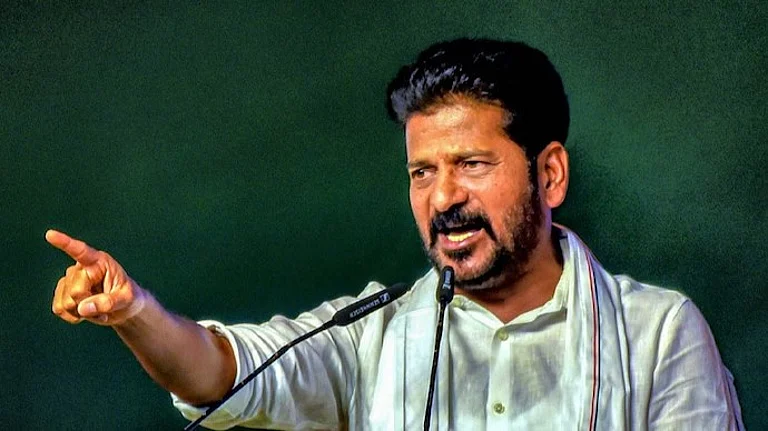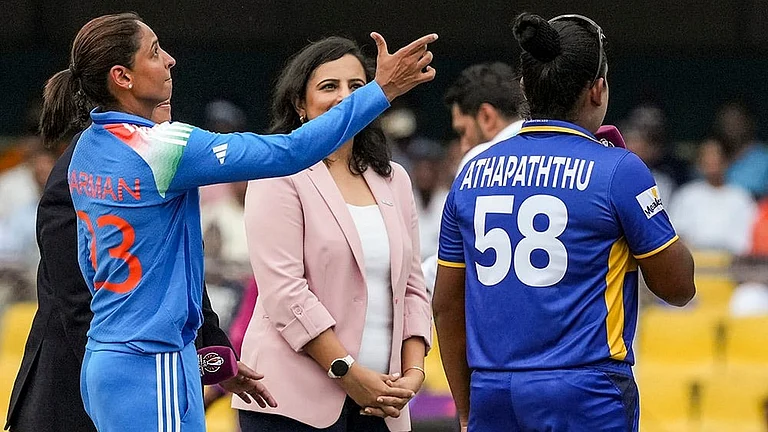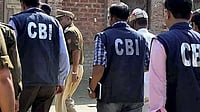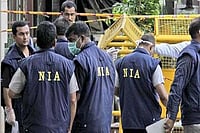THOSE who thought the rupee's travails ended with the 1997 winter of discontent have been forced to eat their words. The rupee has been bearing the brunt of the sanction heatwaves. And this time, it has wilted alone, unaided by its loyal patron and saviour, the Reserve Bank of India.
Last week, as nuclear test-related events broke, the rupee tested new levels of gloom. On May 22, Standard & Poor's downgraded India's sovereign debt rating from stable to negative, while retaining country rating at BB+, a notch below investment grade. The provocation was enough for the rupee to go into a spin. S&P's clearly said: "Reduced access to international loans, at nearly 43 per cent of external debt, will increase dependence on higher cost private funding. Sanctions and heightened tensions could also reduce the flow of FDI and equity investment." Added to this was the worry about the Budget and possible downgrading by the other credit rater Moody's. Then, on May 27, the day after the World Bank put off a vote on some hefty loans for India following US opposition, the rupee crashed to a record low of 41.51 per dollar (interbank spot rate). And before it managed to recover, Pakistan went ballistic. Next day, May 29, the rupee tested a new record of 41.75.
When the news of Pakistan's N-tests broke, trading had officially ended. But in kerb deals, the rupee touched 41.90, leading marketmen to brace for another day of volatility. As the rupee touched 41.75, the SBI, which hadn't intervened till Wednesday, May 27, started dollar sales and the RBI issued a statement promising stability in the forex market, partly arresting the fall.
And that was the only RBI support to the rupee last week, prompting market watchers to comment that the almost-five-per-cent fall in the rupee value was a market-induced devaluation. Says K.N. Dey, senior vice president, Mecklai Financial & Commercial Services: "It is clear that the RBI wants these levels. Earlier, the RBI had interfered in a much more aggressive manner. But this time there has been a conspicuous absence of even verbal intervention."
Says J. Moses Harding, head, forex treasury, IndusInd Bank: "The rupee should settle at around Rs 42. It is because importers have not been hedging their exposures that the RBI had to do a rescue job. I would attribute this to poor risk management by corporates." Agrees B. Bhattacharya, dean—research, Indian Institute of Foreign Trade: "The current panic is the product of an anticipated shortfall in the supply of dollars in the wake of sanctions. This may go on for some time, but logically, the RBI should intervene at Rs 42-43."
Now why should the RBI, led by a perceived conservative like Dr Bimal Jalan, who has warned that an easy money policy should not be confused with a weak rupee policy, let the rupee drift? There are three clear reasons. One, against the backdrop of the South East Asian currency debacle, the rupee is still quite overvalued. At a time when cheap goods from the depressed region are flooding overseas markets, Indian goods need to be price-competitive. Says Rajesh Chaddha, senior consultant, NCAER: "Compared with a global inflation rate of 2-3 per cent, India has an official inflation rate of 6-7 per cent." And, according to economist S.S. Kanoria, on an index of 100 in 1992 for both the US, our largest export destination, and India, the 1997 index for inflation stood at 107.1 for the US and 154.6 for India, thus signalling a much higher real inflation rate.
In fact, the Economic Survey for 1997-98 released on May 28 clearly says the rupee has appreciated in real terms against the currencies of its trading partners. And that, it adds, is the reason for the abysmal export growth of 2.6 per cent last fiscal year. This is also clear from the prevailing high levels of Real Effective Exchange Rate (REER). According to former RBI deputy governor S.S. Tarapore, the REER levels warrant a minimum depreciation of 6-7 per cent against the dollar. Finance Minister Yashwant Sinha went so far as to admit that the rupee depreciated by only 4.48 per cent in 1997-98—this includes the shockwaves of the SE Asian crisis—whereas in March-May 1998, it has already slid 4.23 per cent.
The second reason is less obvious. With the sanctions putting a cloud over capital inflows, the RBI may not like to waste precious foreign currency in fire-fighting operations to stabilise the rupee at an artificial level. Thirdly, an RBI intervention would send an alarming message to foreign investors as well as speculators. By not intervening, RBI has sent a message to FIIs that their investment would be protected and there's no basis for a capital flight. According to one estimate, in the second and third weeks of May, only $150 million was withdrawn by FIIs.
Despite the clear wisdom of the RBI move, a question mark still hangs over the rupee's future? Left indeterminately to the market forces, how would the rupee behave? There is a deep division among rupee-watchers here. Many expect the rupee to stabilise around Rs 42-43 on the eve of the budget, but many more want the government to devalue the rupee down to Rs 46-48, a level which they feel it would probably touch anyway by year-end without RBI intervention. But wouldn't that be a tall order for a swadeshi government for which ensuring the stability of the rupee has been a poll manifesto promise? Says economist Surjit S. Bhalla: "Post nuclear tests, the government should be more inclined towards reforms than it was before. The RBI actions in the forex market don't fool anybody. Why not go the whole hog and announce a devaluation to Rs 48/dollar as part of the budget?" A study by Delhi University's Institute of Economic Growth says that GDP growth can rise beyond 6 per cent a year only if the dollar trades at at least Rs 45.
ON the basis of his target exchange rate model, Bhalla argues that a fair, competitive exchange rate which would give the necessary fillip to exports and the stockmarkets, thereby buoying growth, would be Rs 48/dollar. Agrees Chaddha, who wouldn't go so far as to advocate a devaluation: "If you try to keep your currency at Rs 40, when its correct value is Rs 46-48, then you are encouraging hawala traders and speculators. Let the rupee find its own level, it only makes the case for reducing import duties that much stronger."
The market-induced depreciation couldn't have come at a more convenient time for the government, days before its first budget. For one, by making imports costlier, a cheaper rupee shores up the volume of revenue inflow into the central exchequer, thereby reducing both revenue deficit and fiscal deficit. For another, it automatically gives a measure of protection to domestic industry cribbing against dumping and other modes of unfair competition from foreign goods. Economists argue that it is far fairer and wiser to devalue and benefit both domestic industry and exporters than to slap across-the-board import tariffs, as industry has demanded, and discriminate against the users of intermediate goods who get doubly hit. Plus, there's the classical argument that devaluation makes exports cheaper, pushes up demand for capital and boosts growth while making the country an attractive destination for foreign capital by eliminating currency risks.
The garment export industry, which has been going through a bad phase mainly due to the recession in the European and US markets, is under greater pressure than before. The low per unit realisation from garment exports can only increase if rupee is devalued. Says Apparel Export Promotion Council chairman A. Sakhtivel: "During calendar 1997, garment exports recorded zero growth in dollar terms and 5 per cent in rupee terms."
But can devaluation be the only answer to exports growth? The 20 per cent devaluation in 1991 had only a small impact, says economist T.C.A. Ramanujam. "India exports goods mainly from the agricultural sector and their prices are inelastic. A depreciation of one rupee will add Rs 600 crore to the debt service burden, apart from adding to subsidies." Argues Bhattacharya: "Our exports are just not competitive enough in terms of supply. We just don't have the products, we don't have the logistics." Perhaps that is why even exporters do not expect the currency to exceed Rs 44 to a dollar within the next six months.
The crucial factor here is the Budget. Says economist S.P. Gupta: "I hope the Budget will be very investor-friendly, allowing the rupee to settle at Rs 42. Not much should be made of the harsh S&P rating, which doesn't reflect the strong basics of the economy." But foreign investors beg to differ. Until it reaches Rs 48-50, despite the best, and often erroneous, intentions of the RBI and the finance ministry.


























